 By Staff
By Staff
March 5th, 2019
BURLINGTON, ON
The bylaw is pretty clear, almost blunt and it has $100,000 behind it to, get the work done “expeditiously”.
The task is to:
Assess the role and function of the downtown bus terminal and the Burlington GO Station as Major Transit Station Areas, including assessing the existing and long range planned transit service for the Study Area and the connections between the two respective MTSAs;
Examine the planning structure, land use mix, and intensity for the lands identified on attached schedules. (These are the maps included in the Staff Report.
Update the Official Plan and Zoning By-law regulations, as needed, for the lands identified.
Delegate authority to the City Manager in conjunction with the Director of Finance, the ability to single source or sole source work for this initiative that may exceed $100,000, allowing staff to begin the Study expeditiously.
To do all that the city wants to put a one year freeze on all development within a designated area. They will use an interim control by-law to permit the development freeze. That bylaw they want to have council pass states:
Notwithstanding any other by-law to the contrary, no person shall, for the lands identified on Schedule ‘A’ attached hereto:
a) use any land, building or structure for any purpose whatsoever except for a use that lawfully existed on the date of the passage of this By-law as long as it continues to be used for such purpose; or
b) be permitted to construct, alter or expand any building or structure, save and except where such construction, alteration or expansion is an outcome of a site plan application currently in process on the date of the passage of this By-law that is fully in accordance with the approved zoning bylaw. Site plan applications received for lands within the study areas include: 374 Martha Street, 490-492 Brock Avenue, 421 Brant Street, and 442 Pearl Street.
This By-law shall come into force and take effect immediately upon its passing by Council and shall be in effect for a period of one year from the date of passage of this By-law, or until such time that the Study is completed to the satisfaction of the City Council, unless this By-law is otherwise extended in accordance with the provision of the Planning Act, R.S.O., 1990, c.P.13, as amended.
The Municipal Clerk is hereby authorized and directed to proceed with the giving of notice of the passing of this By-law, in accordance with the Planning Act.
This means those developers with projects that have yet to be approved will be getting a letter in the mail.

Planners asking council to put the brakes on development.
What does it all mean? The city has put the brakes on the number of development applications being put before the Planning department – with the exception of the four that are exempted because they are in the site plan phase.
Anything else is on hold while the city figures out what it wants to do with the Urban Growth Centre boundary and the Downtown mobility hub that has been a contentious issue almost from the day it was dropped on us.
The Planning department explains:
“The need for an interim control by-law is due to staff concerns with the cumulative growth pressures quickly emerging in the Urban Growth Center and on lands in proximity to the Burlington GO Station that are requesting intensities significantly higher than anticipated by the Official Plan.
“The proposed study area includes lands that are within the Urban Growth Centre and lands in proximity to the Burlington GO Station. The interim control by-law will allow the City the opportunity to complete a land use study.
“An interim control by-law would ensure that new developments within the Study Area will be informed by the City’s transit, transportation and land use vision for the Study Area. The recommended interim control by-law will ensure the City can realize the following objectives as set out in the City’s 2015-2040 Strategic Plan:
“An interim control by-law puts a temporary prohibition or limitation on the development of certain lands while a municipality is studying or reviewing its land use policies. This “freeze” can be imposed for only a year, with a maximum extension of a second year. In accordance with the Planning Act, there is no ability to appeal an ICBL when it is first passed; however, an extension to an ICBL for the second year may be appealed.
“The Planning Act provides that an ICBL remains in effect if the new zoning regulations resulting from the ICBL are appealed. The Planning Act also sets out that when an ICBL ceases to be in effect on certain lands, a subsequent ICBL may not be imposed on those lands for a period of 3 years.
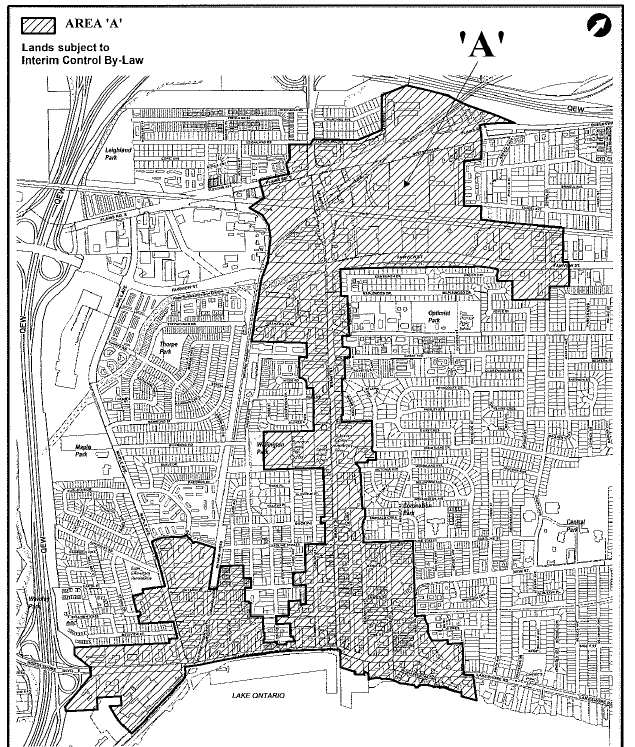
The part of the downtown core that will be subject to a development freeze. There are more detailed maps below.
“lCBLs are an important planning instrument as they allow a municipality to reconsider its land use policies by suspending development that may conflict with any new policy. ICBLs can also be exercised in situations where unforeseen issues arise, as a means of providing breathing space during which time the municipality may study the issues and determine the appropriate planning policy and controls for addressing the issues under study.
“The 2017 Growth Plan identifies an Urban Growth Centre as an existing or emerging downtown area and mandates a density target of a minimum of 200 residents and jobs combined per hectare. It is noted that there is a minor discrepancy in the boundary for Burlington’s Urban Growth Centre (UGC) when comparing between the city’s current and in force Official Plan and that of the Halton Region Official Plan. For the purposes of this interim control by-law, the boundaries of the UGC as shown in the Halton Region Official Plan will be used to establish the boundaries of the study area relating to the UGC.
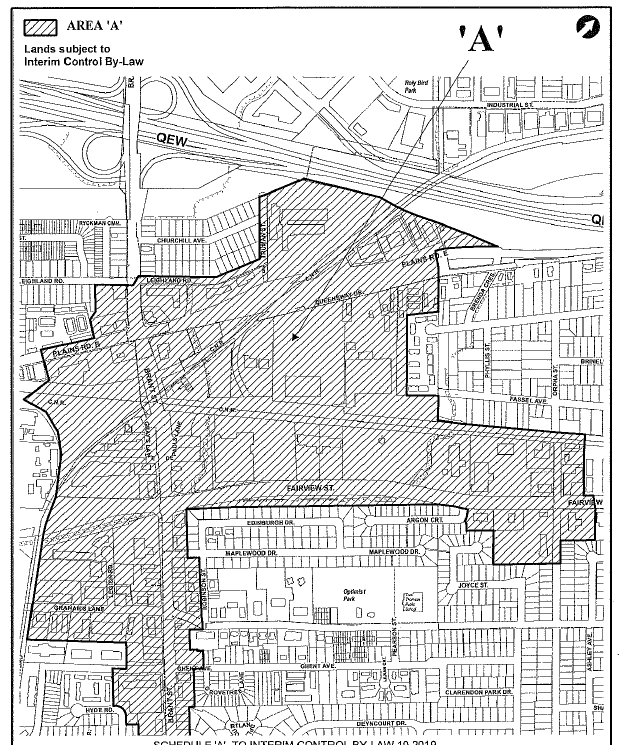
The northern part of the study area.
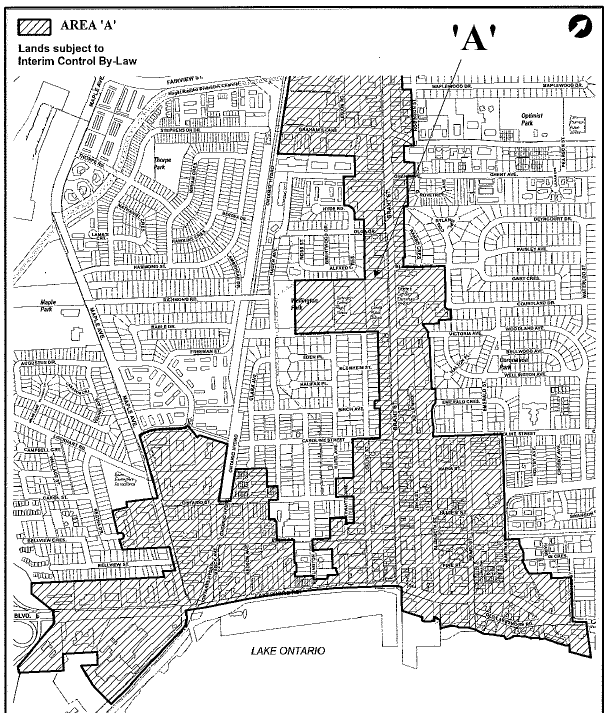
The southern part of the study area.
The 2017 Growth Plan defines a Major Transit Station Area as:
“The area including and around any existing or planned higher order transit station or stop within a settlement area; or the area including and around a major bus depot in an urban core. Major transit station areas generally are defined as the area within an approximate 500 metre radius of a transit station, representing about a 10-minute walk.”

This is part of the transportation system.
The 2017 Growth Plan defines Higher Order Transit as:
“Transit that generally operates in partially or completely dedicated rights-of-way, outside of mixed traffic, and therefore can achieve levels of speed and reliability greater than mixed-traffic transit. Higher order transit can include heavy rail (such as subways and inter-city rail), light rail, and buses in dedicated rights-of-way.”
“The 2017 Growth Plan does not define a Major Bus Depot.
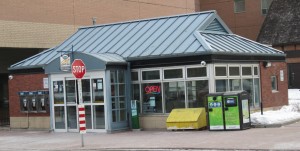
Is this part of the “higher order” of transit?
“It is also noted that amendments to the Major Transit Station Area (MTSA) policies are currently proposed by the Province in Amendment No. 1 to the Growth Plan. For example, the area around a Major Transit Station Area where intensification may be supported is proposed to be increased from 500 to 800 metres.
“In the context of the UGC and lands in proximity to the Burlington GO Station, staff are concerned about the role and function of the Downtown John Street Bus Terminal as an MTSA as set out in the 2017 Growth Plan, and as relied upon by the Ontario Municipal Board (0MB) in the Adi Decision for 374 Martha Street.
“While the concept of an MTSA has existed since the emergence of the 2006 Growth Plan, the 2017 Growth Plan differentiates between those MTSAs located along a priority transit corridor (such as the GO Transit rail network) and those that are not. For those MTSAs located along priority transit corridors, the Growth Plan assigns prescribed minimum density thresholds of 150 residents and jobs combined for lands served by the GO Transit rail network. It is noted that this density threshold is less than the minimum density threshold of 200 persons and jobs combined as ascribed to the UGC by the 2017 Growth Plan.
“For all other MTSAs, the Growth Plan directs municipalities to plan and design these to be “transit-supportive” in accordance with Section 2.2.4.8 of the Growth Plan. Transit supportive is defined by the Growth Plan to essentially mean compact mixed use development that has a high level of employment and residential densities.
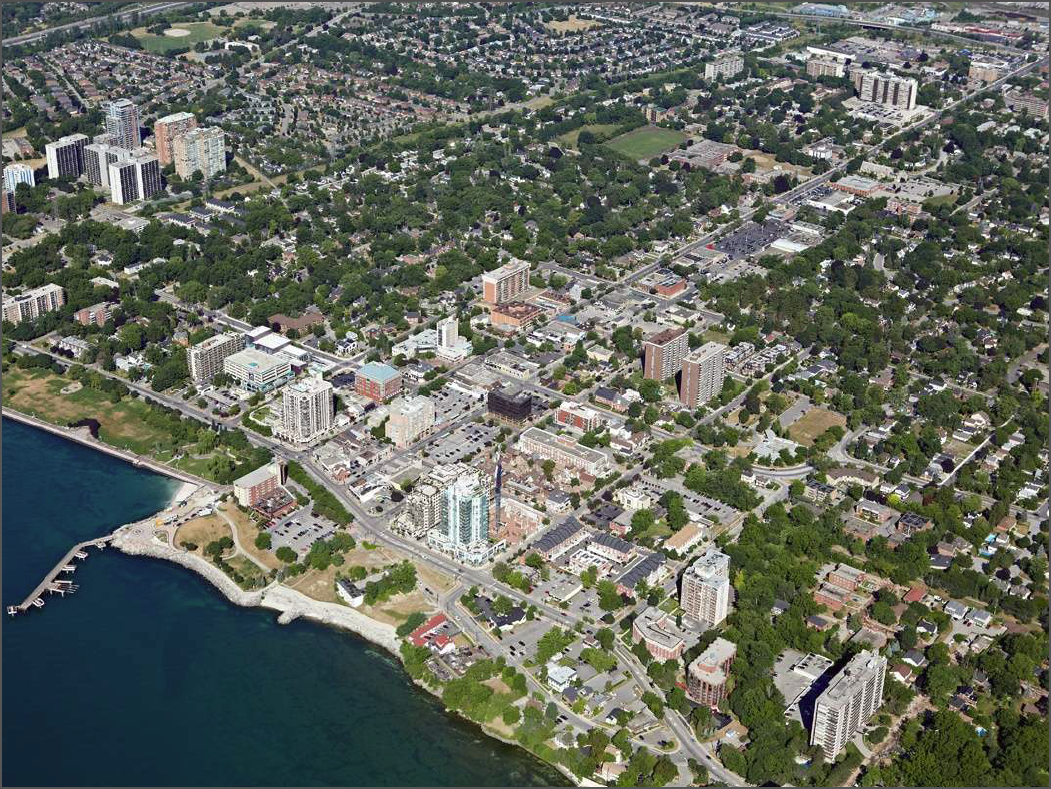
In order to get a better grip on development in the downtown core the planners are asking city council ti impose a freeze on development for one year.
“The 2017 Growth Plan does not include minimum density thresholds for transit supportive MTSAs that are not located on a priority transit corridor.
“While the Terminal is located in the UGC and a number of bus routes connect to it, it generally would not be considered to be “higher order transit” as would a GO Transit Station (for example: Burlington GO Station) or a conventional subway station as is the case in the City of Toronto where significant transit ridership occurs.
“The Study will allow for a detailed examination of the future planned function of the Terminal, which is a critical element of planning justification for the Downtown precinct framework which is absent in the Official Plan. The Terminal comprises a potential key land use element of the Downtown, and in staffs view, pursuant to the Adi Decision, is emerging as an unanticipated driver of residential intensification which may be unjustified, and which has not been planned for in the context of community and infrastructure services.
“Studying the appropriate role and function that the Terminal should play is critical in shaping the final pattern and mix of land uses and transit supportive development within the UGC and is consistent with MTSA policies.
“Moreover, given the close proximity of the Burlington GO station to the northern part of the UGC, it is prudent to study these two MTSAs and the areas around them in concert as they could have a direct influence on one another.
“The Growth Plan has steadily promoted the intensification of development within settlement areas since its inception in 2006. The 2017 Growth Plan has placed additional importance on intensification and transit through prescriptive policies targeting all UGCs and MTSAs. This is readily apparent from the Decision of the 0MB in the Adi case for 374 Martha Street. The 0MB held that compliance with the provincially prescribed minimum density target for Burlington’s UGC is not entirely sufficient; that the provincially prescribed target for the UGC is but a minimum, which municipalities should not hesitate to exceed, subject to good planning. Moreover, lands located within the boundary of the downtown MTSA deserve even higher densities.
“The City strongly objected to this Decision and requested a Section 43 review by the 0MB. The Section 43 Decision was released on November 5, 2018, and dismissed the City’s appeal for a re-hearing.
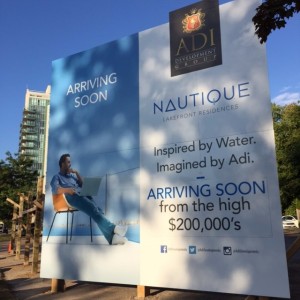
The OMB approval of the ADI development threw all the long term thinking in the air. The Director of Planning at the time missed a major opportunity to change the way the original hearing was proceeding.
“The Adi property is located within the Downtown Core Precinct which has a maximum height limit of 8 storeys in the Official Plan. Contrary to the Downtown Core Precinct policies, the 0MB approved a height limit of 26 storeys for the Adi property. The Adi Decision causes serious concern as it throws into question the merit of the established land use framework of the current and in force Official Plan for allocating and distributing the Growth Plan’s mandated density target within the UGC and the Terminal’s capacity to absorb the transit impacts of such unanticipated growth.
“When the boundary for the UGC was defined, staff’s best estimate at the time indicated that at build out, the densities prescribed in the current and in force Official Plan could meet the target set by the Growth Plan.
“With the incorporation of Adi’s recently approved density, together with other pending development applications that are requesting intensities higher than anticipated by the current and in force Official Plan (or the 2018 adopted Official Plan now before the Region for approval and currently under review), staff are concerned about the cumulative growth pressures quickly emerging in the UGC. At the Adi hearing, the Terminal was seen to be an MTSA that supports intensities well in excess of those contained in the Official Plan. Moreover, the OMB’s view was that by not approving the Adi proposal, it would be contrary to MTSA policy of the Growth Plan.
A portion of Growth Plan policy reads as follows:
“Within all major transit station areas, development will be supported, where appropriate, by …
d) prohibiting land uses and built form that would adversely affect the achievement of transit supportive densities” After considering the Adi decision, and the reliance that other developers in Burlington will place on the downtown MTSA as a rationale for additional intensity, it is imperative that the role and function of the Terminal in concert with the Burlington GO Station, be determined as part of a land use study.
“The Study will provide certainty as to the future use of the Terminal and in turn, provide staff with the planning justification to undertake any policy refinements which may be warranted, both to the study area and to the City’s urban structure as a whole. Clarity respecting the long term structural role of the Downtown as an intensification area will also assist in setting infrastructure priorities for the City as a whole, including the land in proximity to the Burlington GO Station.
“The findings of the Study will facilitate an examination of the mix of land uses within the study areas and the role of their respective MTSAs in these intensification areas. The Study will also assess the existing and long range planned transit service for the study areas and the connections between the two respective MTSAs.
“Considering the two study areas together will inform staff and Council on the future planned function of the Terminal with regard to transit supportive development.
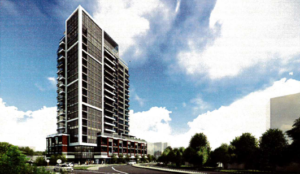
Developer is requesting intensities that are well in excess of those anticipated by the current and in force Official Plan. James at Martha
“There is an urgency that this Study proceeds as soon as possible as cumulative growth pressures in the UGC continue to escalate. Planning staff are aware of multiple pending developments in the application review stage such as 2082-2090 James Street, 409 Brant Street, 2069-2079 Lakeshore Road, as well as other expressions of high density development interests in the UGC and on lands in proximity to the Burlington GO Station, which similar to Adi, are requesting intensities that are well in excess of those anticipated by the current and in force Official Plan (or the 2018 adopted Official Plan now before the Region for approval and currently under review).
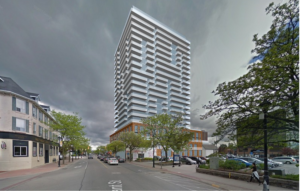
Development proposed for south east corner of Brant and James.
“It is noted that there is an appeal of the application at 409 Brant Street, which at the time of writing this report is scheduled for a case management conference in summer 2019. Staff are also aware of a number of major land assemblies within the UGC where higher than prescribed intensities are anticipated to be applied for over the next few years.
Land Use Study Exemptions
“Applications for site plan approval fully in accordance with the approved zoning bylaw, received prior to the date of the passage of this by-law, on lands within the study areas shall be exempt from this by-law given that most of these developments have received planning approvals by the OMB/LPAT or Council.
“At the time of writing this report, site plan applications received for lands within the study areas include: 374 Martha Street, 490-492 Brock Avenue, 421 Brant Street, and 442 Pearl Street. No new site plan applications for lands within the study areas will be processed from the date of the passage of this by-law.
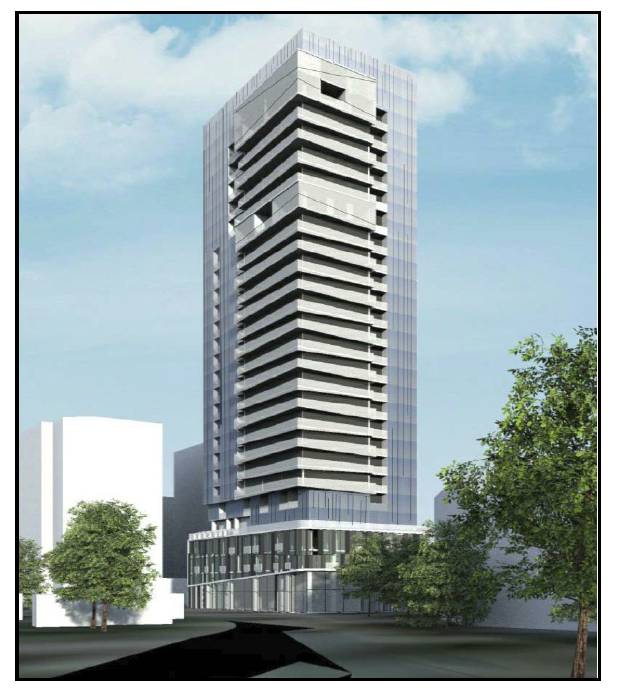
Nautique will rise at the corner of Lakeshore Road and Martha.
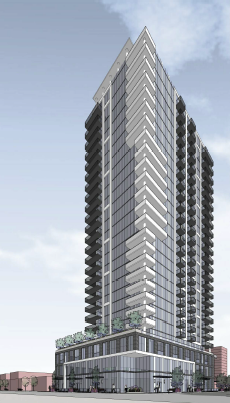
The Carriage Gate development – The Element will get built across the street from city hall.
“Staff recognizes that there are some existing uses such as low density residential within the study areas that will be affected by the ICBL and they will be prevented from being altered or expanded during the term of the Study.
“There are some downsides and perhaps unintended consequences. “Potential financial matters as an outcome of an interim control by-law will likely include: reduced planning development application fees and revenues, reduced building permit and construction activity, reduced development charges received, and deferral of Capital Works projects within the study areas.
“Given the need to proceed expeditiously with the Study, this report recommends that the City Manager be delegated the authority for single or sole source the required work should the value exceed $100,000.
“The Study will require collaboration with the Transit and Transportation Departments to ensure the function of the Terminal aligns with the planning structure of the UGC and lands in proximity to the Burlington GO Station. It will also provide greater clarity to the Capital Works Department when predicting life cycles and investments for various city assets within the study areas.
“No notice is required prior to the passing of a by-law for an interim control by-law however, notice has been provided for the proposed interim control by-law. Notice of passing of the interim control by-law shall be provided pursuant to the provisions of the Planning Act.
Conclusion:
“Given the implications of the recent Adi Decision and its reliance upon the MTSA status for the approval of 26 storeys, which is beyond the density level established in the Official Plan, and the above-noted significant development pressures, staff recommends that an interim control by-law be passed as outlined in the Recommendation section of this report. The interim control by-law will provide sufficient time for the Study to examine the planning structure, land use mix, and intensity for the lands within the study area. It is planned that this Study would be initiated immediately by staff in order that there be an expeditious planning process in 2019.”
This gets debated at a Standing Committee meeting this afternoon. Assuming the recommendation coming out of the meeting is to go forward – the Standing Committee will become a city council meeting and the by law will be passed.
Would it be fair and reasonable to cal this a Bold move?


















And this lunacy will create affordable housing? Sucking and blowing at the same time. Sounds like nobody knows whats going on any more. Planning on opening a business in Burlington? think again. How much will this cost the taxpayers in legal bills when the large Developers take the City to court.
Not sure if Bold is the right term. Sounds like something any council could do and it is an easy way to appease those that elected downtown councillor wh want less or no development. To me it means in 1 year we will have once again significant backlog of applications through out the city and based on results so far the new LPAT will approve. So we have gained a year with no new development approval is all.